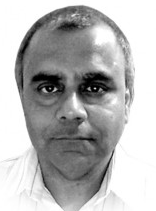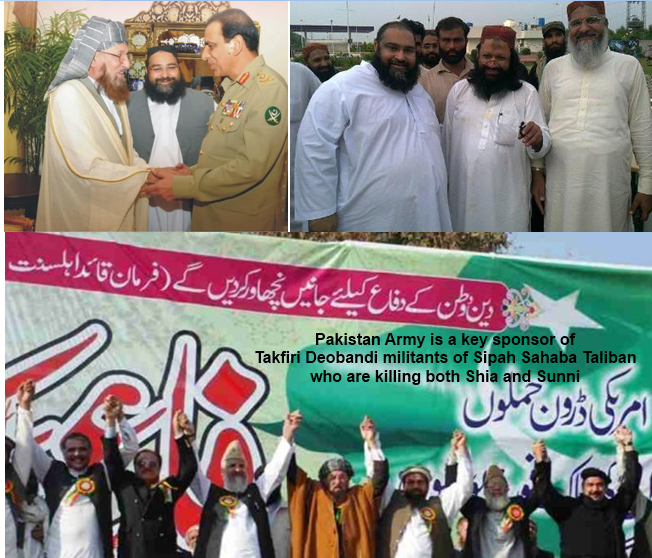General Kayani’s most dangerous and potentially fatal policy was the appeasement of the Lashkar-e-Jhangvi – by Yousuf Nazar
 The history may not be that kind to General Ashfaq Pervez Kayani as some of the analysts and journalists have been. He may be remembered as the man who took Pakistan to the brink of civil war.
The history may not be that kind to General Ashfaq Pervez Kayani as some of the analysts and journalists have been. He may be remembered as the man who took Pakistan to the brink of civil war.
He was one of Pakistan’s most powerful men for almost a decade, first as the ISI chief during 2004-2007 and then as the army chief for a record six-year term. As the ISI head he presided over the rise of Pakistani Taliban as the deadly force that was to claim lives of over 45,000 civilians and soldiers. Under his watch as the ISI boss, Mohammad Noor Alam alias Abdullah Mehsud, an ex-Guantanamo Bay inmate, became one of the most wanted jihadi commanders shortly after his arrival in Waziristan in May 2004 after his release from Guantanamo Bay in March 2004. It still remains a mystery how Abdullah was so quickly able to raise a terrorist force of thousands of armed fighters.
Kayani remained “India centric” for too long before it dawned on him that the internal terrorism posed the greatest threat. His duplicitous stance on drone attacks practically emboldened the Pakistani Taliban and their sympathizers as the battles to win public opinions against their heinous crimes were lost on the TV screens where the ISI surrogates ranted against America while Kayani secretly urged his friends in the Pentagon and the CIA to hit specific targets like Baitullah Mehsud.
The false narrative on drone attacks, fed to leaders like Imran Khan and media proxies like Zaid Hamid, by the intelligence agencies under Kayani’s watch, was originally intended to hide Army’s complicity in the drone attacks since the very first against Nek Mohammed in 2004. But it enabled bigots like Munawar Hasan to hijack the national discourse in the name of Jihad and added to the confusion even among the ranks of the armed forces.
I am not a supporter of any party. I am a non-entity for most Pakistanis apart from a few who care to read my article in English newspapers. I have no incentive to make false allegations but two senior members of Tehreek-e-Insaf, Naeemul Haq and Firdous Shameem privately confirmed to me the secret contacts between the GHQ/ISI and Imran Khan. I have no option but to disclose my sources because the national interest must override personal considerations and friendships.
In the final analysis, Kayani remained “India-centric” to the suicidal degree that Pakistani establishment long has been. Talibans in Afghanistan and Lashkar-e-Taiba in Kashmir remained key planks of a rudderless strategy that has boomeranged.
Kayani’s most dangerous and potentially fatal policy was the appeasement of the hate mob led by Lashkar-e-Jhangvi LeJ. Malik Ishaq – the leader of LeJ – was released on bail by Pakistan’s Supreme Court in July 2011 after spending 12 years in jail. On his release, he was received outside the prison by leaders of Sipah-e-Sahaba Pakistan (SSP), banned in 2001 as a [Takfiri Deobandi] terrorist organization but now renamed to Ahle Sunnat wal Jamaat (ASWJ). The ASWJ leader heading the welcome party was Maulana Muhammad Ahmad Ludhianvi who came in handy when Ashfaq Kayani called on Ishaq to talk to the terrorists who had attacked Army General Headquarters in Rawalpindi in October 2009. The Army chief’s personal plane had carried Ishaq to Rawalpindi, while another plane belonging to the ISI chief, Gen. Shuja Pasha, carried Ludhianvi, according to the reports published in Newsweek Pakistan, and daily newspapers, the Express Tribune and the News International.
Shiites are “the greatest infidels on earth,” Malik Ishaq told a Reuters reporter in November 2012. His LEJ goons operated in Quetta carrying out planned genocide of Hazara Shias without any resistance from security forces. The New York Times reported December 3, 2012:
“The murders in Quetta, for instance, involve remarkably little mystery. By wide consensus, the gunmen are based in Mastung, a dusty agricultural village 18 miles to the south that is the bustling local hub of Lashkar-e-Jhangvi, the country’s most notorious sectarian militant group.”
Pakistan’s security establishment did not deliberately stop the growing power of dreadful [Takfiri Deobandi] extremists of the Lashkar-e-Jhangvi while its own ‘death squads’ pursued and ruthlessly killed Baloch dissidents and dumped their bodies with great efficiency. LEJ was brought into mainstream politics under Kayani’s watch and participated in 2013 general elections under the cover of Ahle Sunnat wal Jamaat (ASWJ). The same ASWJ was behind the violence and riots that rocked the garrison city of Rawalpindi and spread to other cities during the holy month of Moharam in October 2103.
The idea that extremists and militant organisations like LET and LEJ [aka ASWJ-SSP] should be brought into mainstream is the most dangerous development since Pakistan’s political and material support for the Talibans started during the mid-1990s. It may lead to bigger disasters even a civil war. If that happens, history will not forgive Kayani never mind what Pakistani media might be telling us today.
Source: State of Pakistan, with minor edits describing the Takfiri Deobandi identity of ASWJ-LeJ-SSP.


رانا ثنااللہ کا کہنا ہے کہ حکومت کو اپنی نئی پالیسی اختیار کرنے کے لیے تین اہم عہدوں پر فائز افراد کے ریٹائر ہونے کا انتظار تھا۔ ان میں سابق صدر آصف علی زرداری، سافق چیف جسٹس افتخار محمد چوہدری اور فوج کے سابق سربراہ جنرل اشفاق پرویز کیانی شامل ہیں۔
انھوں نے کہا کہ’اگر جسٹس چوہدری افتخار اب عدالت میں ہوتے تو انھوں نے دوسری ہی دن تحفظِ پاکستان آرڈیننس کو رد کرنا تھا۔‘ انھوں نے یہ بھی دعویٰ کیا کہ 6 سال تک پاکستانی فوج کے سربراہ رہنے والے جنرل اشفاق پرویز کیانی طالبان کے خلاف کارروائی کرنے کے لیے راضی نہیں تھے تاہم عسکری ذرائع کا دعویٰ ہے کہ جنرل کیانی عدم کارروائی کی وجہ سے مایوس تھے۔
رانا ثنااللہ نے کہا کہ پنجاب کو محفوظ بنانے کے لیے پنجاب کے 174 علاقوں میں، جہاں پر پشتون آباد ہیں، کارروائی کی جائے گی۔ انھوں نے کہا کہ ’ہمیں خدشہ ہے کہ شدت پسندوں پنجاب میں جوابی کارروائیاں کریں گے۔‘
http://www.bbc.co.uk/urdu/pakistan/2014/01/140128_sanaullah_smash_taliban_rk.shtml
mILLTR ugnfbbbdvmey, [url=http://sdjbdsvpwyja.com/]sdjbdsvpwyja[/url], [link=http://yqonofpcneae.com/]yqonofpcneae[/link], http://haqjwqyufxcx.com/
buying hydrochlorothiazide,
signature loans for bad credit,
prednisone,
viagra soft tabs 100mg,
more bonuses,
generic for metformin,
methotrexate,
quick loan bad credit,
synthroid no prescription,
finasteride proscar,
sildenafil citrate 100mg,
albenza,
generic celexa,
get a loan with no credit check,
metformin,
generic amitriptyline online,
tretinoin cream sale,
payday loans greenville sc,
buy trazodone not generic without a prescription,